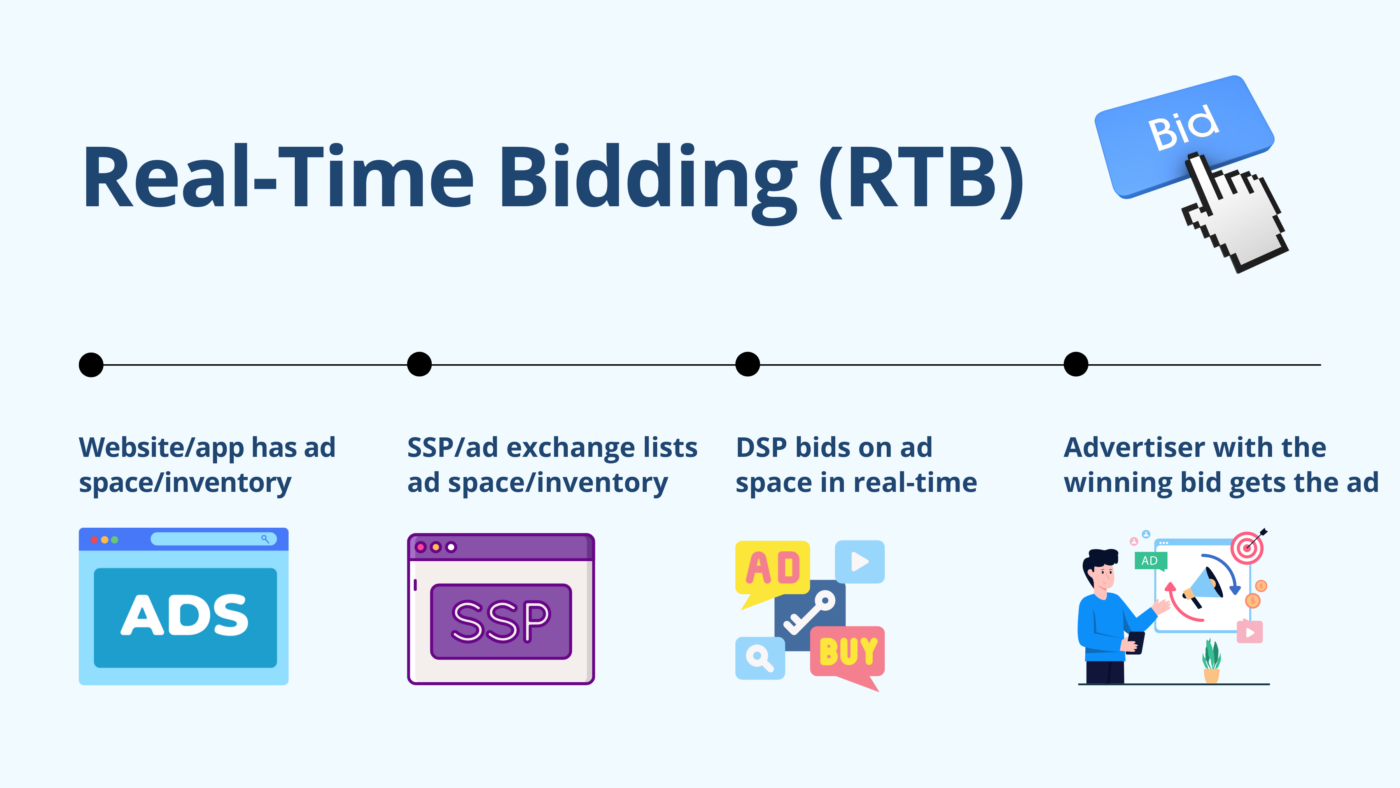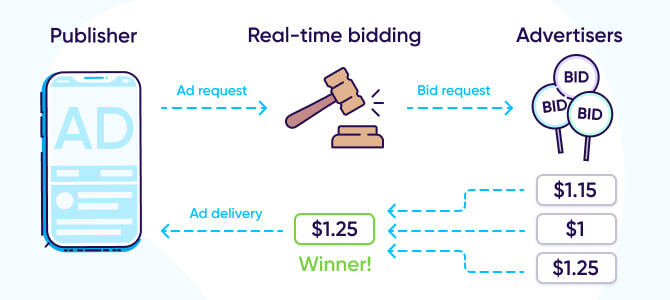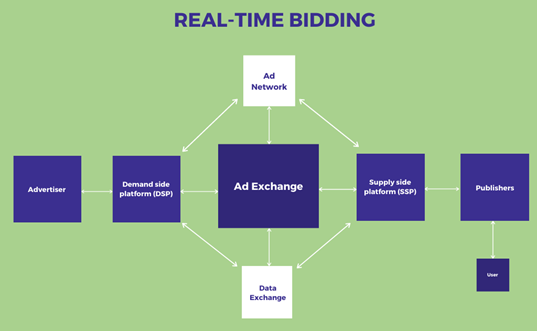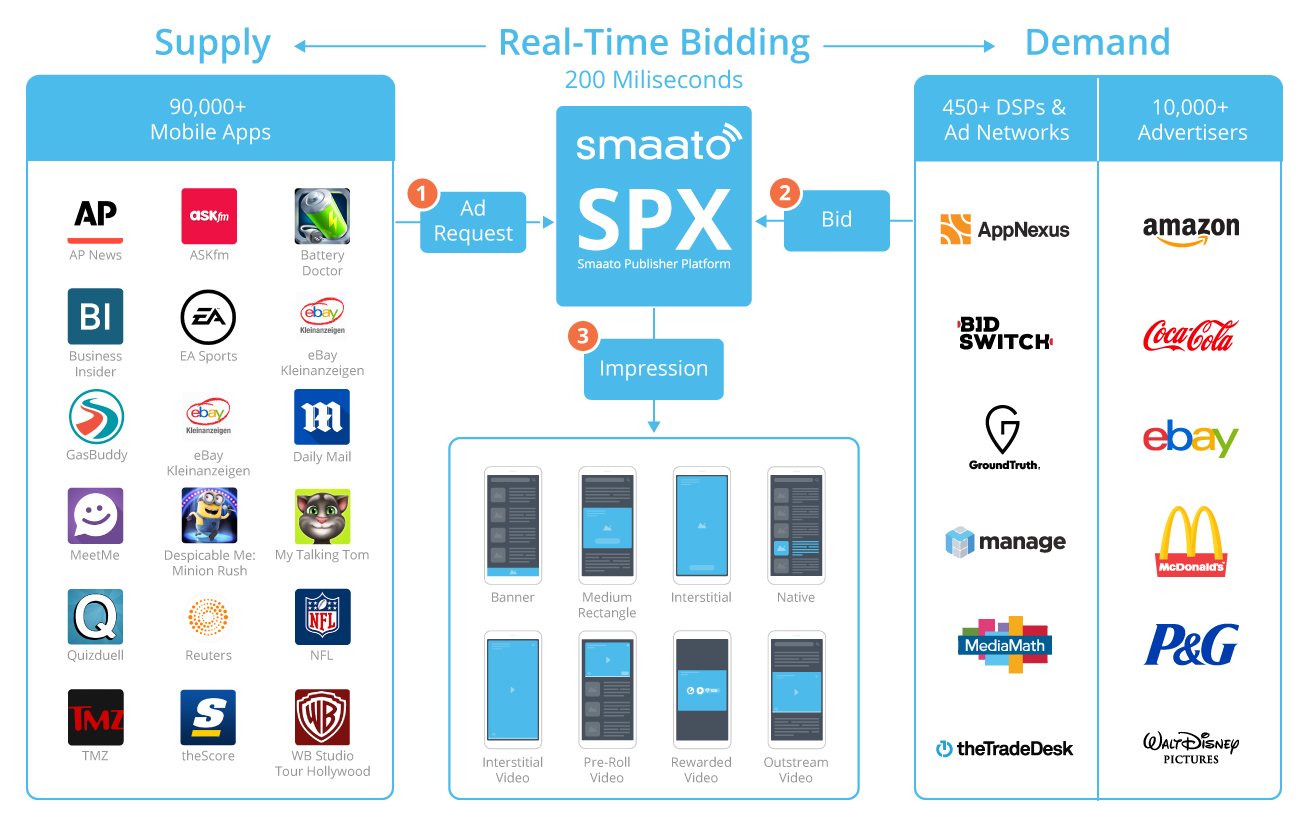Real-Time Bidding (RTB) has revolutionized the world of digital advertising, offering brands and advertisers a smarter, more efficient way to buy and sell ad space. If you’ve ever wondered how the online ads you see are chosen for you in the blink of an eye, the answer lies in RTB. This powerful mechanism is the backbone of programmatic advertising, allowing advertisers to bid on ad inventory in real time and target audiences with precision. In this article, we’ll dive deep into what RTB is, how it works, its benefits, and the key players involved in the ecosystem.

What is Real-Time Bidding (RTB)?
Real-Time Bidding (RTB) is a digital advertising method that allows advertisers to bid for ad impressions in real time. In other words, when a user visits a website, a real-time auction takes place between advertisers who want to show their ads to that specific user. The highest bidder wins the ad placement, and the ad is displayed to the user almost instantly.
Unlike traditional display advertising, where ad inventory is bought and sold directly through publishers, RTB uses a programmatic approach, automating the buying and selling process through exchanges, demand-side platforms (DSPs), and supply-side platforms (SSPs).
How Does RTB Work?
At its core, RTB is a programmatic auction system where advertisers bid on the opportunity to serve an ad to a user. Here’s a simplified breakdown of the process:
- User Visits a Website: When a user visits a website with ad space, the page sends a request to an ad exchange to auction the available ad slot.
- Auction Time: The ad exchange sends the request to the demand-side platform (DSP), where advertisers can bid on the impression. The DSP evaluates the user’s data, including location, browsing history, device type, and other targeting factors.
- Advertiser Bid: Advertisers place bids on the ad impression based on how valuable the user is to them. This is where the power of audience targeting comes into play.
- Winning Bid: The highest bid wins the auction, and the winning ad is instantly served to the user. This all happens in milliseconds, ensuring a seamless user experience.
- Ad Delivery: Once the auction is completed, the winning ad is displayed on the user’s screen.
This process is all automated, and the bidding happens in real time, hence the name Real-Time Bidding.

Key Players in RTB
RTB is an intricate ecosystem involving several key players:
- Advertisers and Agencies: These are the entities that place bids for ad impressions through Demand-Side Platforms (DSPs). Advertisers want to reach their target audience and are willing to bid for the chance to show their ads.
- Demand-Side Platforms (DSPs): These platforms allow advertisers to manage their bids, track performance, and make data-driven decisions. DSPs connect to ad exchanges, enabling advertisers to participate in RTB auctions.
- Ad Exchanges: These are digital marketplaces where publishers and advertisers meet to buy and sell ad space. They facilitate the real-time auction process by connecting DSPs with supply-side platforms.
- Supply-Side Platforms (SSPs): These platforms help publishers manage their ad inventory and optimize revenue. SSPs connect publishers with ad exchanges, where they can sell ad space to the highest bidder.
- Publishers: Website owners and content creators who provide ad space to be auctioned off in RTB. Publishers rely on ad exchanges and SSPs to sell their inventory.
- Ad Networks: Though not always directly involved in RTB, ad networks aggregate ad inventory from multiple sources and help match advertisers with publishers.
Advantages of Real-Time Bidding
RTB offers several benefits that have made it a preferred choice for advertisers and publishers alike.
1. Precise Targeting
RTB enables advertisers to target specific demographics, interests, and behaviors. Advertisers can bid for impressions based on user data, ensuring that their ads are seen by the right people. This reduces wasted impressions and increases the likelihood of conversions.
2. Cost Efficiency
With RTB, advertisers only pay for the impressions that are most likely to convert. This makes it more cost-effective compared to traditional advertising methods. Publishers also benefit by getting the highest possible price for their ad space.
3. Real-Time Optimization
Advertisers can track the performance of their ads in real time, adjusting their bids and strategies on the fly to improve outcomes. This level of control allows for dynamic and efficient ad campaigns.
4. Better ROI
The precision of targeting and the real-time nature of RTB lead to better return on investment (ROI). Advertisers can fine-tune their campaigns, optimize ad creatives, and target high-value users, all of which contribute to a more profitable campaign.
5. Transparency
Both advertisers and publishers gain more transparency with RTB. Advertisers can see exactly where their ads are being shown and how they’re performing, while publishers can see how much they’re earning from each ad impression.

RTB vs. Traditional Ad Buying
Real-Time Bidding stands in stark contrast to traditional ad buying methods, such as direct buys or programmatic direct. Here’s a quick comparison:
| Feature | RTB | Traditional Ad Buying |
|---|---|---|
| Ad Auction | Real-time, automatic bidding | Pre-negotiated prices |
| Targeting | Highly granular, based on user data | Broad demographic targeting |
| Efficiency | Fast and data-driven | Slower and more manual |
| Pricing | Based on auction, competitive | Fixed prices |
| Control | Real-time adjustments to campaigns | Limited flexibility |
Challenges of Real-Time Bidding
While RTB offers numerous benefits, it’s not without its challenges:
- Fraud Risk: Fraudulent activity, such as click fraud and ad stacking, can impact the effectiveness of RTB campaigns. Advertisers need to take extra precautions to ensure their budgets are being spent efficiently.
- Data Privacy Concerns: With increasing concerns over user privacy, advertisers must be cautious about the data they collect and use for targeting. Regulations like GDPR and CCPA have impacted how advertisers gather and use data.
- Complexity: The RTB ecosystem involves multiple players and platforms, which can make it difficult for new advertisers to navigate. However, with the right tools and expertise, the complexity can be managed.
Real-Time Bidding and Programmatic Advertising
RTB is a subset of programmatic advertising, which refers to the automated buying and selling of digital ad inventory using technology. While RTB focuses on real-time auctions, programmatic advertising can also include direct deals and private marketplace transactions.
In essence, RTB is the auction-based element of programmatic advertising, making it a more dynamic and fluid way to buy ad space. For more insights into programmatic advertising, check out this comprehensive guide.
Best Practices for Advertisers in RTB
To succeed in Real-Time Bidding, advertisers should follow these best practices:
- Use Advanced Targeting: Take advantage of data to segment audiences and bid on specific impressions that align with your target market.
- Monitor Performance: Use real-time reporting and analytics to optimize your campaigns continuously.
- Set Realistic Budgets: Since RTB involves bidding, it’s important to set a clear budget and avoid overbidding for impressions.
- A/B Test Creatives: Test different ad creatives to see which ones perform the best in real-time.
- Leverage Retargeting: Use retargeting strategies to reach users who have already shown interest in your product or service.
FAQ on Real-Time Bidding
Q1: Is RTB the same as programmatic advertising?
- While RTB is a part of programmatic advertising, programmatic can also include private auctions and direct deals, whereas RTB focuses on open real-time auctions.
Q2: How long does it take for an RTB auction to occur?
- RTB auctions happen in milliseconds. The process is so fast that users dont notice any delay when viewing ads.
Q3: What kind of targeting is possible with RTB?
- RTB allows for highly granular targeting, including demographic, geographic, device-based, behavioral, and contextual targeting.
Q4: Is RTB only used for display ads?
- No, RTB is used for various types of digital ads, including display, video, mobile, and native ads.
Conclusion
Real-Time Bidding has reshaped the landscape of digital advertising by offering a fast, cost-efficient, and highly targeted way to buy and sell ad space. By participating in RTB, advertisers gain access to an automated, auction-driven environment that maximizes their ROI and ensures that their ads reach the right audience at the right time. However, as with any technology, advertisers must stay informed about best practices and potential challenges to fully capitalize on the power of RTB.

